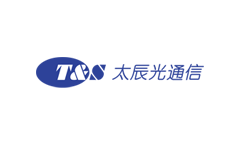The Optical Fiber Loss Budget and Influencing Factors

Ⅰ. Know the Optical Fiber loss budget
Today,
IT hardware demands ever higher computing speeds, and the tiny fiber
loss budgets of high-speed topologies such as 400Gb Ethernet and 256Gb
Fibre Channel are a real challenge for data center managers. More
challenging is building a structured fiber cabling system that supports
not only the current required transmission rates but also the higher
data rates defined by the Ethernet Alliance and the Fiber Channel
Industry Association.
Is it possible to design a new fiber-optic structured cabling infrastructure to support the data center's next 10 to 15-year life cycle without extensive reconfiguration or modification of the physical layer infrastructure? This is certainly possible, but we need to consider the following aspects.
Ⅱ. Calculation formula of fiber link loss budget
The
formula for calculating the loss budget of an optical fiber link is very
important for the ideal structural foundation. The total loss budget refers
to the acceptable amount of optical signal power loss in an optical link
that maintains the error-free operation of the link. The unit is dB. "Link"
means the optical fiber path between the transmitter and the receiver.
The link loss budget is estimated based on the amount of attenuation or signal reduction associated with the distance and number of connectors in the link. Before designing and installing an optical fiber link, we need to calculate the maximum loss caused by the path and connection. Organizations such as the Institute of Electrical and Electronics Engineers (IEEE) and the Fibre Channel Industry Association (FCIA) have defined acceptable fiber link loss budgets. These two standards define Ethernet speeds from 1Gb to 400Gb and 4Gb to 128Gb for Fibre Channels.
Ⅲ. The influencing factors of attenuation
The
existence of connection points is the main reason for attenuation, but
the interaction between other factors and links will also affect the
attenuation, mainly including the following aspects:
1. Absorption and scattering phenomena and presence of impurities in optical fiber
2. Distance from the end to the end of the link
3. Fiber cabling infrastructure and cable strain design
4. Number of connectors and fusion points in the link
5. Poor product design
6. Optical modules and other active devices are degraded
7. Aging of passive devices
8. The bending radius of the optical fiber is too small
9. Dirty end face
- +1 Like
- Add to Favorites
Recommend
- How to Achieve Precise Connection of Optical Fibers with Fiber Connectors?
- What Are the Classifications of Optical Fiber Attenuators?
- Coherent Releases New Specialty Optical Fiber for Lidar and Quantum Computing Applications
- What is the Minimum Bending Radius of an Optical Fiber Patchcord?
- The Ultimate Guide to Fiber Optic Transceiver Modules
- Sekorm Reached a Cooperation with the top Cable manufacturer LEONI to Expand the Cable and Optical Fiber Business
- Selection and Detection of Fiber Optic Patch Cord
- What Are the Specific Classification Methods of Fiber Optical Products?
This document is provided by Sekorm Platform for VIP exclusive service. The copyright is owned by Sekorm. Without authorization, any medias, websites or individual are not allowed to reprint. When authorizing the reprint, the link of www.sekorm.com must be indicated.





























































































































































































































































































































































































































































































































































































































































































































































































































































































